Biographies - Catherine II
German Princess Who Came to Rule Russia
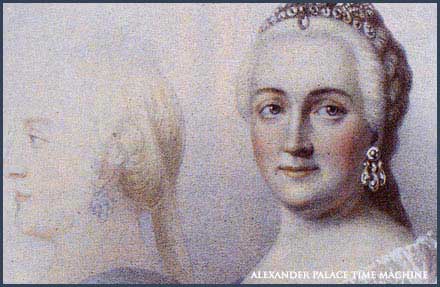
She had been born Princess Sophia August Frederika on May 2, 1729 in the Baltic seaport town of Stettin, then a part of German Pomerania. Her father was an obscure German military princeling named Christian August, and her mother was Princess Joanna Elizabeth of Holstein-Gottorp. Her father was nominal ruler of the tiny principality of Anhalt-Zerbst, but the greater part of his life was spent as an officer in the service of Prussia. Little Sophia was nicknamed Feke or Figchen. Little is known about her early life, except that which Catherine related in her unfinished autobiography years later.
Figchen's mother, Joanna, was the sister of Karl August, who had been engaged to Elizabeth I of Russia before she took the throne. Karl August died suddenly and unexpectantly in Petersburg in 1727. Elizabeth kept a fondness for him and his family long after his death. In the early 1740's Elizabeth was searching for a wife for her nephew and heir, Peter. Fidgen was the right age and a sentimental choice for the romantic Empress of Russia. Figchen and her mother were summoned by Elizabeth to Russia late in 1743. The potential match of the young German princess and the heir to the Russian throne was actively promoted by her mother and the Prussian King, Frederick, who saw the alliance as a way to further Prussian interests at the court of St. Petersburg. He eyed Figchen carefully at a banquet in her honor in Berlin before she left for Russia. He always claimed he saw greatness in her, even when Sophia was a child.
Crossing the border into Russia she went from Riga to St. Petersburg and on to Moscow, finally meeting Elizabeth on February 9, 1744. Elizabeth was enchanted with her. Figchen immediately began to study Russian and Orthodoxy, with the end result of abandoning Lutheranism for the Russian Church, being re-christened Yekaterina - Catherine.
Her husband-to-be was a great disappointment to everyone. He was sickly, mean spirited and ill-equipped mentally or physically to rule a vast empire like Russia. He was also unable to consummate his marriage to Catherine. Elizabeth didn't understand the fault was Peter's and pressured the couple to produce a son - thus securing the dynasty. When it was clear this wasn't going to happen, Elizabeth permitted an affair between Catherine and a handsome Russian officer, Serge Saltykov. Catherine conceived and bore a son, Paul, who was accepted by Peter as his own. Immediately after his birth, little Paul was carried off to Elizabeth's quarters and the Empress raised him as her own.
Catherine and Peter hated one another. On the death of Elizabeth on December 25, 1761, Peter ascended the throne as Peter III. He quickly showed his mania for all things Prussian by forming an alliance with Prussia that was to Russia's detriment. Peter ordered the proud Imperial guard regiments to dispose of their uniforms from the days of Peter the Great in exchange for tight-fitting uniforms in the Prussian style. He followed this with the imposition of new, brutal military rules on the same Prussian model, which turned the armed forces against him. Hatred of Peter grew quickly among all classes and the country accepted with relief the coup-d'etat of Catherine, who deposed her husband on June 28, 1762.
Catherine ascended the throne as the most pious and Orthodox Empress, Catherine II, crowned on September 22, 1762 with tremendous pomp and ceremony at the heart of Russian culture and Orthodoxy in the ancient Moscow Kremlin. Her husband, Peter had been murdered by her lover Orlov, his brother and some other henchmen some months before, and was soon forgotten. Catherine solidified her position by awarding her supporters with high government positions and grants of land, money and serfs.
Catherine quickly began to make changes in government and society based on the convictions she had assimilated during her study of French philosophes of the Enlightenment and the authors of ancient Rome. She was deeply disappointed by the difficulty of imposing foreign precepts - even if they were rational ones - of government on Russia. It became easier and easier to abandon her principals. Catherine slipped deeper and deeper into autocracy - all the while maintaining the facade of an enlightened ruler. The ruin of the Orthodox church, which had begun under Peter the Great, was continued under Catherine, who seized its wealth and turned its prelates and priests into state employees.
She built marvelous new monuments across Russia and transformed St. Petersburg into a truly European city of Imperial pretensions. The arts, music and education where patronized by her, and Catherine pumped millions of rubles into the creation of the Hermitage collection, which today is the delight of Russia and the world. No other Russian monarch appreciated beauty as much as Catherine, she set the stage for the emergence of a national Russian culture that would emerge as something unique and wonderful in the 19th century.
Re-marriage was out of the question and she probably never took a husband again; although it has been rumored that she and a later lover, Potemkin, were secretly married in the Church of St. Samson in Petersburg. Much has been made of Catherine's libido. She has entered history with a mixed reputation due to the young men who entered her life in it's later years. Had she been a man, no one would have spoken of it, and many of the most famous tales about her are untrue. She dealt with the issue of her affairs head-on and justified it to herself as the need of an autocrat for companionship and diversion.
Throughout her life she was estranged from her son, Paul, who grew up hating his mother for her condescending treatment of him and her role in the murder of his imagined father, Peter III, which he believed was more direct than history has proven. Paul never accepted the fact that his father was Serge Saltykov. The enmity between mother and son was mutual. Catherine felt Paul was foolish and unbalanced. Once on the throne he was sure to undo all of her accomplishments. He rashly boasted of this many times in Russia and on journeys abroad. Catherine planned to bypass Paul and leave her crown to his first son and her favorite grandson, Alexander. Feeling she had a number of years left, she did not make the arrangements for the transition to Alexander and upon her death from a heart attack on November 6, 1796 the throne passed to Paul.
Catherine's achievements were many. She left Russia much stronger, more prosperous and beautiful than she had found it. That she failed in much she had set out to do had less to do with her and more to do with human nature. Catherine was unable to transform Russia through her will alone. Since she was unwilling to use terror or force to transform society, she chose a more patient path, hoping to gradually raise the level of culture by legislation, education, and example. She single-handedly grafted onto Russian rootstock the bud-wood of western culture, which was taken and remolded two generations later into something marvellous.
Please send your comments on this page and the Time Machine to boba@pallasweb.com

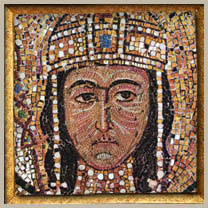



 Imperial Bedroom
Imperial Bedroom Portrait Hall
Portrait Hall Mauve Room
Mauve Room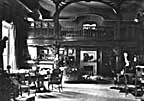 Maple Room
Maple Room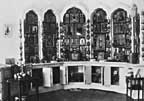 Aleksey's Bedroom
Aleksey's Bedroom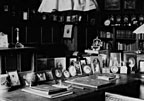 Nicholas's Study
Nicholas's Study Aleksey's Playroom
Aleksey's Playroom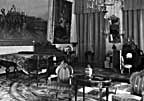 Formal Reception
Formal Reception Balcony View
Balcony View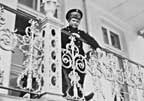 Aleksey- Balcony
Aleksey- Balcony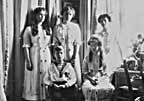 Children-Mauve
Children-Mauve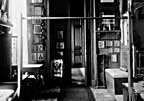 Nicholas's Bathroom
Nicholas's Bathroom Alexandra- Mauve
Alexandra- Mauve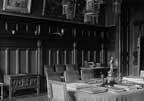 Nicholas's Reception
Nicholas's Reception Tsarskoe Selo Map
Tsarskoe Selo Map